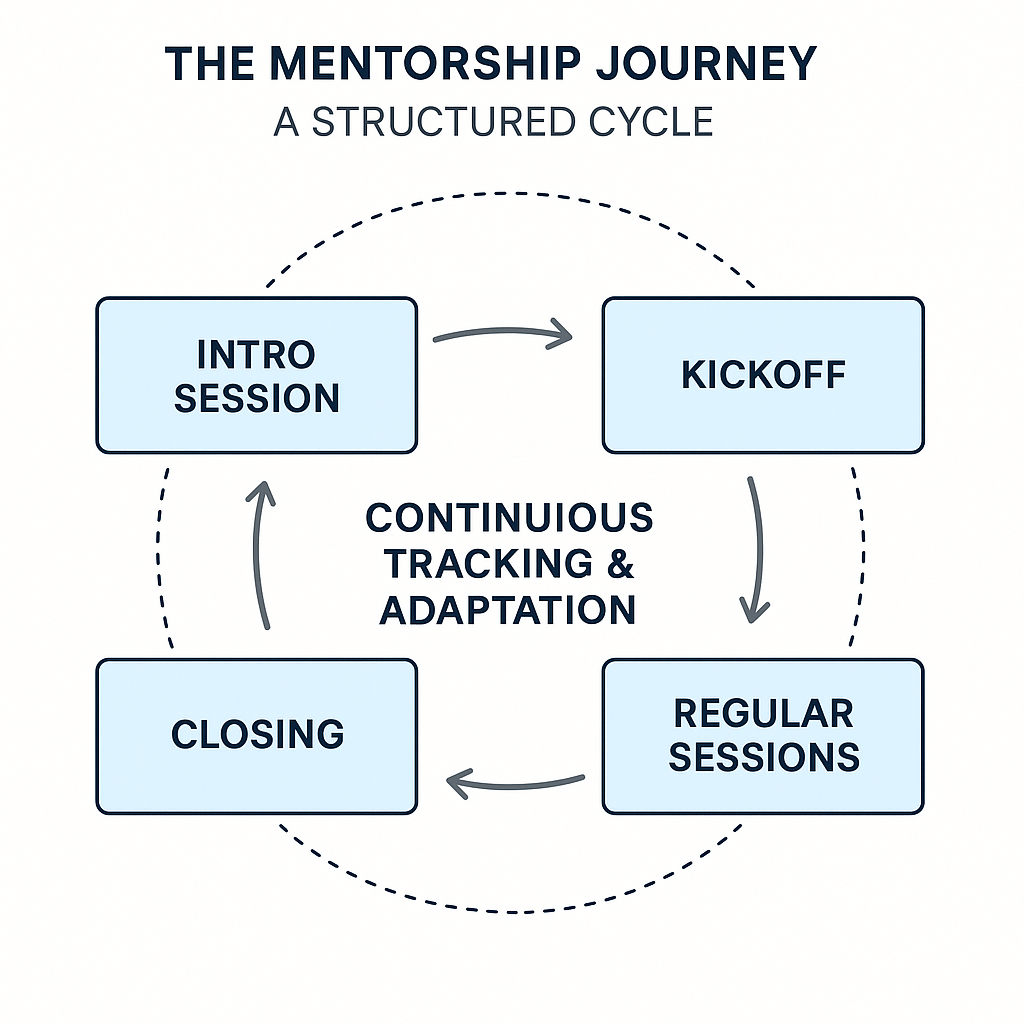Cycle Overview:
Intro Session → Kickoff → Regular Sessions → Closing(with continuous Tracking & Adaptation in the background)

Intro Session (Pre-Cycle)
Purpose: This is before a mentee commits to a bundle/plan. It’s an exploratory conversation, not part of the formal mentoring cycle
- Assess compatibility (style, availability, expectations).
- Explore high-level goals (e.g., “career growth,” “interview prep”).
- Discuss general methodology and how the program works.
- Decide if both sides want to move forward.
Phase 1: Kickoff
Foundation-setting before starting structured sessions.- Current State Assessment (background, skills, gaps).
- Expectations & Ground Rules (scheduling, communication, confidentiality, feedback).
- Goal-Setting (SMART goals + 2–3 outcome indicators).
Phase 2: Regular Sessions
Ongoing, structured engagement tailored to the mentee. Session Flow- Check-in: How is the mentee doing since the last session?
- Core discussion: Focus on the agreed topic (e.g., job search, technical skills, personal development).
- Reflection & feedback: Encourage the mentee to summarize key takeaways and next steps.
- Knowledge-sharing: insights, lessons learned.
- Skills practice: interactive exercises.
- Feedback & reflection: progress review and discussion.
Continuous Layer: Tracking & Adaptation
Mentorship is most effective when progress is visible. Tracking allows both mentor and mentee to see how far they’ve come, identify gaps, and make adjustments along the way.- Revisit goals regularly (every 4–6 weeks, or as needed).
- Measure outcomes against agreed indicators.
- Build accountability: mentee shares updates or deliverables before each session.
👉 Reference tool: Progress Tracker.
Phase 3: Closing
Formal conclusion that recognizes progress and sets forward momentum.- Review Progress against goals and outcomes.
- Celebrate Achievements (highlight specific wins).
- Plan Next Steps (action plan, future goals, networking).
- Formal Closure (feedback forms, respectful conclusion).
👉 Reference tool: End-of-Cycle Review Form.